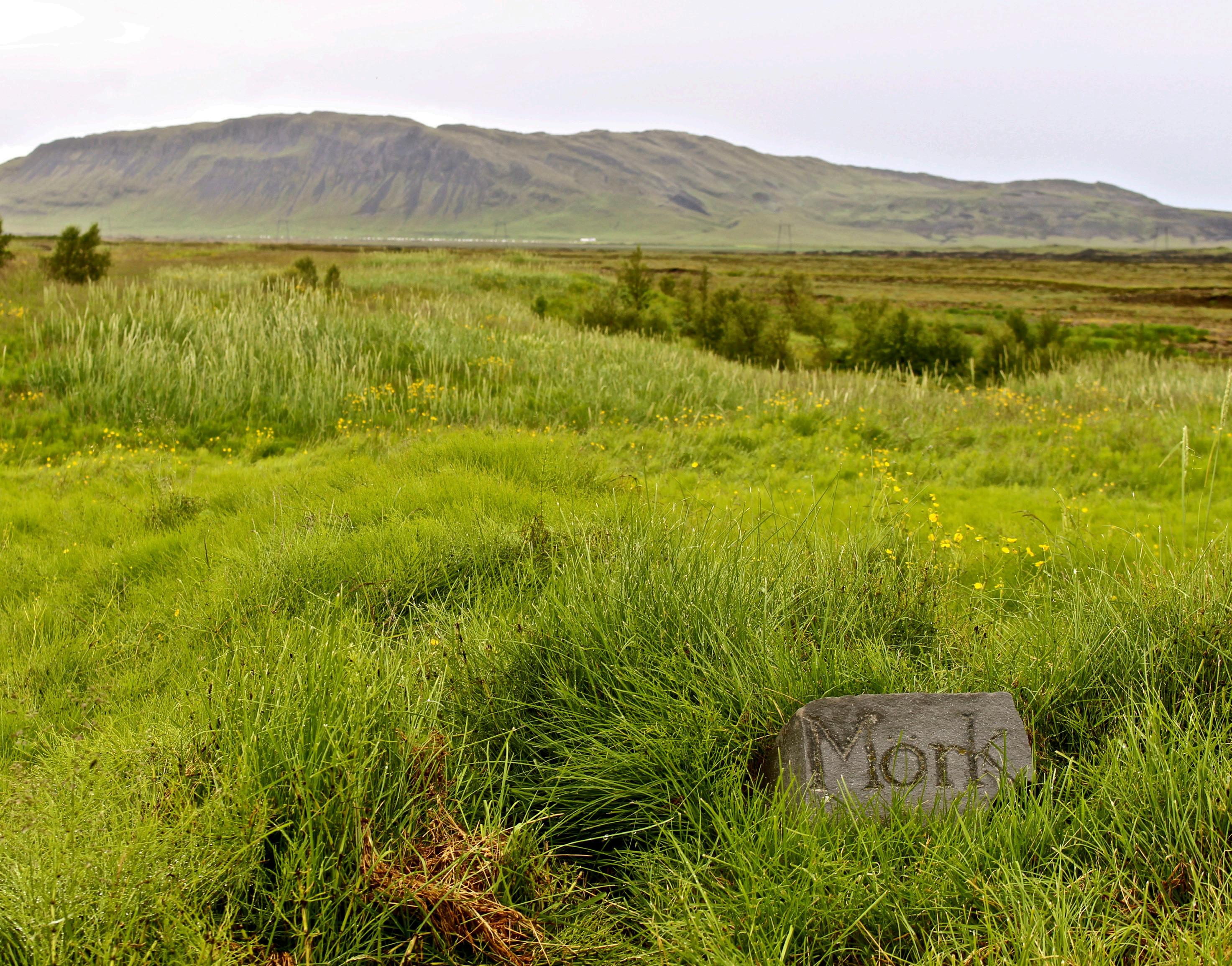
3 minute read
Gamla Skarðssel
from Thraedir_a_landi
by ferdalag
Ekki fékst leyfi landeiganda til að setja þarna niður sögutöflu.

Advertisement

HÖSKULDUR AND ARNDÍS In the summer of 1882, the husband and wife Höskuldur Jónsson and Arndís Magnúsdóttir came to Skarðssel in Landsveit. In the great sandstorm in the spring, their land Klofi had been devastated and their livestock killed. Their children were now distributed all over the area: The two youngest, Guðný not yet four months and Ragnhildur in her third year, were in Flagbjarnarholt, Finnbogi eleven at Árhraun in Skeiðar and the oldest two, Jón 19 and Sigríður the older in her eighteenth year, were working on unnamed farms. Having found places for their children, Höskuldur and Arndís had fled their area, destitute, with two of the children, Sigríður the younger, seven and Kjartan, in his fourth year. They went to work on separate farms in Biskupstungur. No solutions seemed immediate. But they could not accept this situation and wanted above all to be together and to be able to take their children back.
TO THE NATIVE PLACE Höskuldur and Arndís knew that Skarðssel had been deserted because the farmer had fled from there that spring. The land´s owner, Stefán Þórðarson in Núpstún in Ytrihreppur, kindly gave them permission to settle there and they decided to return to their native place. They came to Skarðssel in midsummer, on foot from Biskupstungur, with the children Sigríður the younger and Kjartan. They must have secured ferry services across the major rivers Þjórsá and Hvítá.
SITTING ROOM THE LENGTH OF A BED Their son Finnbogi says in his memoires “… When coming to Skarðssel, the situation was such that there was one bed´s length left of the sitting room, that was the north end, the front end had been sawed away across. Turf and rock had to be stacked into the opening to form a wall and to get some shelter in this cave. They had to make do with settling there because they had no other options. The same goes for other living conditions because most people in this area had to live with a shortage of necessities. …” The farm stood north of the hill Skarðsfjallsháls where it had stood since time immemorial. Arndís had grown up there with her mother and stepfather. She therefore knew the local conditions well and knew that the source of water was a spring on the western fringe of the field. The spring had now disappeared beneath a tall sand drift. They found another place where they could get water, socalled Litlulækir, but it was far to go along a steep route. They had to have some livestock and soon they acquired a good mare, which they later paid for with lamb fodder.
DIDN´T WANT TO LET GO OF THE CHILD When a milking cow had arrived in the cowshed in Skarðssel, it was possible to get the youngest children, Ragnhildur and Guðný, from foster care. They didn´t manage to get both of them because their fosterer, Helga Árnadóttir, Höskuldur´s cousin, housewife at Flagbjarnarholt, didn´t want to let go of Guðný and she remained with Helga into adulthood.
DECISION FOR THE FUTURE Finnbogi had been placed at Árhraun in Skeiðar in spring 1882. He was then in his twelfth year. In 1887, the farmer there, Eiríkur Ingimundarson, decided to go to America with all his people and he invited Finnbogi to come with them. “… I had the opportunity to go with them to America and to work for the cost of the trip when I got there. But I turned the offer down just because I had no inclination, because of course I completely lacked judgement for deciding for the future, then only 16 years old. …” (F.H.) Finnbogi went to work in Grindavík and worked there rowing out to sea for fishing and other work for many winters. In spring he came home to Skarðssel and worked for his parents till autumn.
LIVESTOCK IN SKARÐSSEL 1888 After six years in Skarðssel, Höskuldur and Arndís had built up their livestock, 16 ewes, two horses and one cow.
THE FARM MOVED TO ÞJÓRSÁ In 1890, every impression in the field was becoming filled to the brim with sand and the water well Litlulækir likewise completely covered in sand. They therefore began work in 1893 to move the farm to Þjórsá and in spring 1894 the family moved there.










